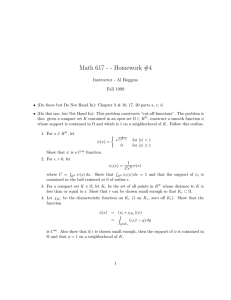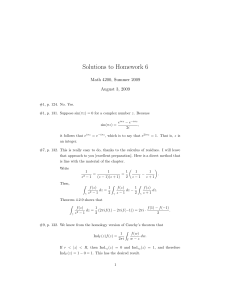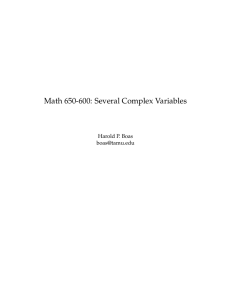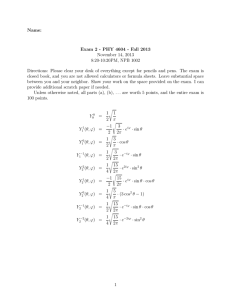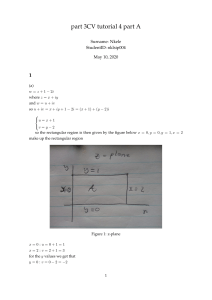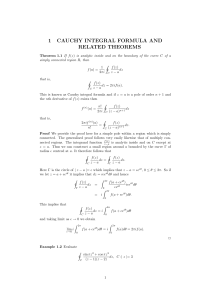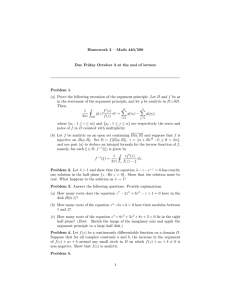PHZ3113–Introduction to Theoretical Physics Fall 2008 Problem Set 15 Solutions Nov. 23, 2008
advertisement
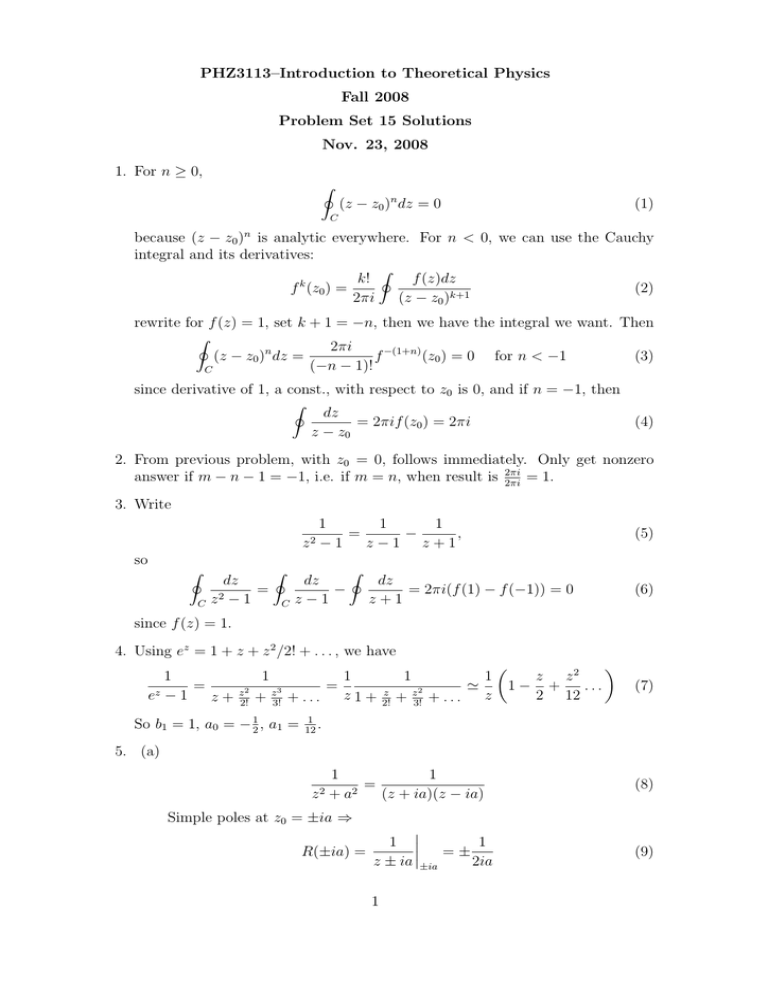
PHZ3113–Introduction to Theoretical Physics Fall 2008 Problem Set 15 Solutions Nov. 23, 2008 1. For n ≥ 0, I (z − z0 )n dz = 0 (1) C because (z − z0 )n is analytic everywhere. For n < 0, we can use the Cauchy integral and its derivatives: I k! f (z)dz k f (z0 ) = (2) 2πi (z − z0 )k+1 rewrite for f (z) = 1, set k + 1 = −n, then we have the integral we want. Then I 2πi (z − z0 )n dz = f −(1+n) (z0 ) = 0 for n < −1 (3) (−n − 1)! C since derivative of 1, a const., with respect to z0 is 0, and if n = −1, then I dz = 2πif (z0 ) = 2πi (4) z − z0 2. From previous problem, with z0 = 0, follows immediately. Only get nonzero answer if m − n − 1 = −1, i.e. if m = n, when result is 2πi = 1. 2πi 3. Write 1 1 1 = − , z2 − 1 z−1 z+1 so I C dz = z2 − 1 I C dz − z−1 I (5) dz = 2πi(f (1) − f (−1)) = 0 z+1 (6) since f (z) = 1. 4. Using ez = 1 + z + z 2 /2! + . . . , we have 1 = z e −1 z+ z2 2! 1 1 = z3 z1+ + 3! + . . . So b1 = 1, a0 = − 12 , a1 = z 2! 1 1 ' z2 z + 3! + . . . µ z z2 1− + ... 2 12 ¶ (7) 1 . 12 5. (a) z2 1 1 = 2 +a (z + ia)(z − ia) (8) Simple poles at z0 = ±ia ⇒ ¯ 1 1 ¯¯ =± R(±ia) = ¯ z ± ia ±ia 2ia 1 (9) (b) z2 z2 = (z 2 + a2 )2 (z + ia)2 (z − ia)2 (10) 2nd order poles at z0 = ±ia. ¯ ¯ d z2 z2 2z 1 ¯ R(±ia) = = −2 + =± ¯ 2 3 2 dz (z + ia) (z ± ia) (z ± ia) z=±ia 4ai (11) sin z1 sin 1/z = z 2 + a2 (z + ia)(z − ia) (12) (c) Simple poles at z0 = ±ia and essential singularity at z = 0. ⇒ R(±ia) = sin 1/ai sinh(1/a) =− 2ia 2a (13) For essential singularity expand ∞ 1 X (−1)n+1 n! sin = z zn n=1 (14) converges everywhere except at z = 0. The coefficient of 1/z is 1. The b1 term in Laurent series will come from identifying the 1/z term in this 1 1 z2 series multiplied by z2 +a 2 ' a2 (1 − z 2 + . . . ), meaning that the residue is 1/a2 . (d) zeiz eiz = z 2 + a2 (z + ia)(z − ia) simple poles z0 = ±ia ⇒ R(±ia) = 12 e∓a . 2 (15)

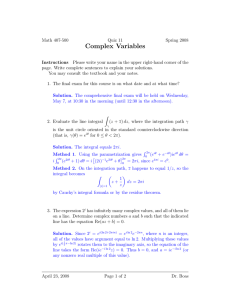

![MA3422 (Functional Analysis 2) Tutorial sheet 2 [January 30, 2015] Name: Solutions](http://s2.studylib.net/store/data/010731571_1-85c1490eb5e97193f48b0a6b0e583a8c-300x300.png)

